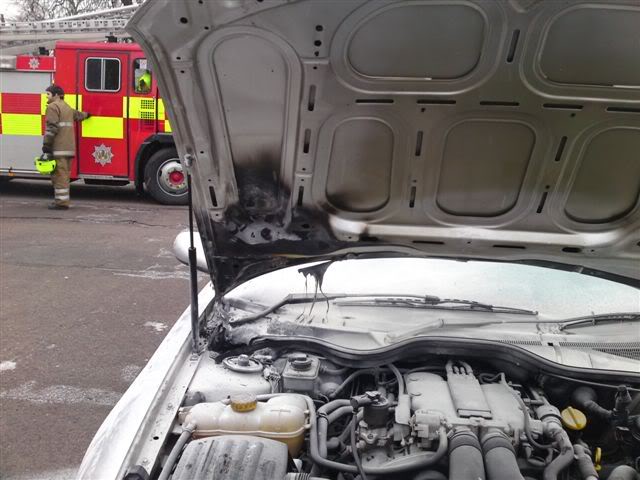The Only SolutionThe only viable solution therefore is to buy a replacement Powersounder. Due to the problems that have been highlighted, it should be fairly obvious that a second hand one is out of the question, and I would also be very dubious about buying one from an internet auction site too. Unfortunately, they are not the cheapest item to buy from a Main Dealer, but this is the only place you should be looking. If it has been sat on the shelf for a while, it would not concern me in the slightest, as its only once the batteries have started to be charged and discharged that the life starts to deteriorate.
What if I simply ignore it?As stated, it is not uncommon for the Powersounder to chirp, beep or sound every once in a while, or if the battery voltage is low. But if its happening very often, and it gets to a stage where you can start to “predict” that its going to make a noise, then its time to take drastic action. Do not put it off, because if you do, then the batteries may leak, and the Powersounder will become a dead short circuit across your Main Battery terminals, which will sadly end like this.

Luckily this one was caught and extinguished quickly, but this fault has indeed claimed many members cars on here.
Can I simply remove it?The Powersounder is not integral to the vehicles electronics, and the car will operate perfectly if it is removed. However, you need to be aware of some serious implications.
The Powersounder was fitted as a legal requirement to the vehicle specifications, and if removed then strictly speaking the vehicle no longer conforms. Many of you will reply to this with “
So what?”
As previously stated, part of the legislation was to ensure that the vehicles met the security standards as laid down by the MIRRC and that the level of Thatcham Category 1 was met. If you remove the Powersounder, then you car no longer meets the required standard for insurance. If you told your Insurance Company that the car is Thatcham Cat 1, or has the standard Alarm fitted, and they find out that the Powersounder has been removed, then not only may the Insurance policy be void, but they may also come after you for Insurance fraud in the event of a claim. Big Brother does read forums such as this, and as an electronics expert who has been called upon for a few vehicle fires, I can assure you that looking for a Powersounder on an Omega is now amongst the checklist of items for quite a few Insurance Assessors out there. This is as a direct result of so many saying to the world that they can be removed. You may think so, but the Insurers disagree.
There are always alternatives though, but they do come at a cost. It is indeed possible to remove and replace the entire Vauxhall Omega Alarm system with an approved aftermarket system, but the costs of this may not be considered viable against the cost of the vehicle itself, or of a genuine replacement Powersounder.
Dave DND


 Author
Topic: The Omega Powersounder - A Guide (Read 81819 times)
Author
Topic: The Omega Powersounder - A Guide (Read 81819 times)

